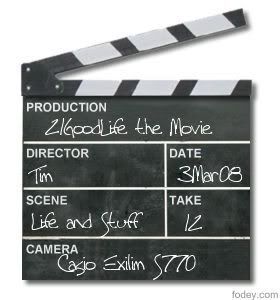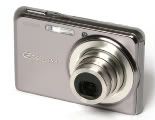Trains, Pains and Call Centres
I had an interesting, yet frustrating experience last week. I was booked on an engagement that saw me just off Saville Row, London, for 4 days. I decided to do the commute for the 4 days on the train, as I can get door to door in just over 3 hours. Most folks' perceptions these days of trains are getting stranded at Birmingham New Street with only a donner kebab to console you with. It's far from the truth these days, and the long distance Virgin lines have been running with rather good efficiency for some time - I know, because I'm always on them. Booking this journey though, was up there with NTL support. I'm a tolerant person by Buddhist monk standards, but this got me rattled. My first 'apparent' mistake was that I was booking multiple journeys. I entered in Tuesday's journey, and instead of 'proceed to payment', I chose 'add another journey' - simple right? So, add Wednesday, Thursday, and Friday; total cost £600. Ouch! Now I'm off to 'proceed to payment', enter all the details and what not, and finally click 'make payment'. Wait a few seconds…'Card issuer declined' - Eh? I must have made a mistake somewhere. Check the details, no they're correct; try again. Same thing 'Card issuer declined' - Bollocks! So I get on the blower to AMEX. Have to enter my card number which is a bit fiddly on a PDA soft phone, but I get through, and very quick I might add. The support person knows her stuff, and takes time to explain everything as we go along. It transpires that Virgin in their ultimate wisdom didn't want to take £600 off me. They though it much better to make a transaction for each ticket, or 4 x £150. So you can guess what happened. Yup, the card declined the transaction, as it saw it as a bit dodgy - rightly so. In fact, it wasn't actually declined, more held pending for manual authorisation, so the authorisation was complete, they just needed confirmation. Virgin Rails booking system isn't that clever though, so they just binned off the booking as declined. AMEX told me, as the transactions were pending, I had to call Virgin Rail and get them to either manually authorise with their merchant ID, or for them to cancel the transaction. This is where the fun and games really started. As I dialled the number for Virgin, little did I realise, my call was being trunked across to India. Now I'm all for a bit of multi-culture. In fact India is just about my favourite destination in the world; I've travelled there since 1996. But, Indian call centres are a complete nightmare. First off, the culture is very very different. When I've got a problem, I want somebody that understands 'me', not the other way around. Whatever problem I have, I want it sorting, and with the minimum of fuss; after all, I'm paying for a service. There are language difficulties, and their English accent is harder to understand - and I'm pretty good at it. Anyway, my call centre guy was clearly reading off a teleprompt/screen, and there was just zero flexibility to what he could do or help me with, unless it was on the screen. He didn't really understand what was going on, apart from what he was prompted to tell me. Now it's not his fault, and I wasn't shitty at any point, but I was sharp. I was told that I'd just have to wait 24-48 hours, and try again. While explaining my problem, I must have mentioned that I was travelling from Warrington to London Euston at 6:27 on Tuesday about 10 times. He decided that he'd try to make the reservation over the phone - but his first question was 'what is your destination and time of travel'. Queue the mute button, and me screaming my fucking head off. After 5 minutes, his computer crashed, and I was told to call back in 15 minutes - arghghhghgh - OMFG!!!!! It's the Indian way though. If there's one thing I've learned being over there, is you just can't fight it. You have to go with the flow and be patient. I just had to switch myself into that mode again, and the pain soon started to subside. Soon after, I had a chuckle, all be it with still slightly elevated blood pressure, but I smiled. I eventually put the journey on another card; one that I don't use for work. I was able to use my AMEX for the day after thank God. I did call customer services (not the booking line) to explain my plight, and that centre was based in the UK. The guy was flexible and understood what was going on. He told me there'd been an upgrade in January, and he'd seen a few instances of this happening. He said he'd pass my comments on to the business support team. All reassuring, and professional at last. I won't be booking multiple tickets with Virgin again in a rush, no matter how much I love India.

 I was doing some heavy research on dpreview.com, as I'd seen some solid state memory MPEG-4 (part 2) recorders, and wanted to try to find a point and shoot that did the same. I came across the Casio range of cameras, and they appeared to have a whole line of cameras that recorded to MPEG-4. I trawled through countless reviews, and from what I could gather, the photo quality was average, but the video quality was good, more so considering the compression. They also did widescreen mode shooting, which I prefer, as my intended audience is 16:9. I settled on the Casio S770, as it was card sized, meaning it would go nearly everywhere with me, and most importantly wouldn't be a chore.
I was doing some heavy research on dpreview.com, as I'd seen some solid state memory MPEG-4 (part 2) recorders, and wanted to try to find a point and shoot that did the same. I came across the Casio range of cameras, and they appeared to have a whole line of cameras that recorded to MPEG-4. I trawled through countless reviews, and from what I could gather, the photo quality was average, but the video quality was good, more so considering the compression. They also did widescreen mode shooting, which I prefer, as my intended audience is 16:9. I settled on the Casio S770, as it was card sized, meaning it would go nearly everywhere with me, and most importantly wouldn't be a chore.